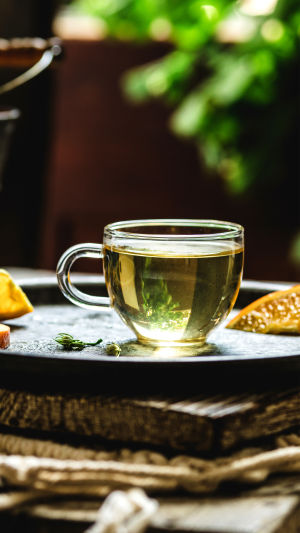With the increasing focus on health, drinking tea has become increasingly popular.
Improving living standards also allows many people to pursue better-quality tea. However, many people are puzzled by this: why does a supposedly "good" tea sometimes end up mediocre when brewed?
Brewing tea is an art, and mastering the timing of infusion is critical. The infusion time directly affects the taste and flavor of a cup of tea. Improper infusion time may result in over-brewed tea, which can be bitter and unpleasant. Conversely, with the right timing, you can brew fragrant and delightful tea.
To brew a great tea, one must first understand the "three elements" of tea brewing: the number of tea leaves, the water temperature, and the brewing time.
Beginners often struggle with how much tea to put in the pot. The term "tea-to-water ratio" is commonly used by tea connoisseurs to describe the amount of tea leaves relative to water (actually referring to the volume of the teaware). When using professional equipment and methods, the typical tea-to-water ratio is between 1:15 and 1:25, although it may vary depending on the type of tea.
For example, green tea, yellow tea, white tea, black tea, and flower tea can often be brewed with a ratio of 1:25, meaning 1 gram of tea leaves per 25 milliliters of water. For teas like oolong and black tea, which often aim for a more robust flavor, a ratio of 1:15 is more common.
For everyday brewing methods, such as steeping, the tea-to-water ratio is usually between 1:50 and 1:100. When boiling tea, due to the sustained high temperature, fewer tea leaves should be used, with a ratio of 1:150 to 1:200 being appropriate.
<h3>How to master the optimal infusion time:</h3>
1. Based on the shape of the tea: Tea leaves can generally be categorized into pressed, granular, and strip forms. The easier it is for the tea leaves to unfurl, the shorter the infusion time. Generally, pressed teas require the longest infusion time, followed by granular teas, and strip teas require the shortest time.
This is because fully expanded tea leaves can maximize flavor extraction and active substances. The tighter the tea, the harder it is to infuse, requiring a longer brewing time.
2. Based on the number of tea leaves: Generally, a more significant amount of tea leaves requires a shorter infusion time, while a smaller amount requires a longer time. Using too much tea can result in excessive extraction of nutrients in a short time, leading to bitterness or extreme strength. However, using too little tea can produce a weak brew with little flavor.
3. Based on the brewing water temperature: Higher water temperatures lead to shorter infusion times, as the active substances in the tea are more readily extracted. Lower temperatures require longer infusion times.
In general, infusion times tend to lengthen with each subsequent brewing. The first three or four infusions typically don't require extended brewing for good-quality tea. You can tell when to stop brewing by observing the bubbles around the teacup's rim or the tea color's consistency.
It's time to stop brewing when the bubbles dissipate or the tea color becomes consistent. As the saying goes, success lies in the details. Paying attention to these five points when drinking tea and practicing regularly will help improve your tea brewing skills and enable you to brew genuinely delicious tea.





